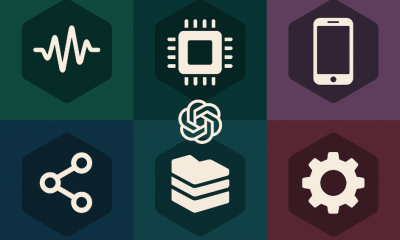Healthcare
Computer Vision System Automatically Analyzes Cells

A new computer vision system developed by researchers at the Universidad Carlos III de Madrid (UC3M) enables the automatic analysis of biomedical videos that are captured by microscopy. The system characterizes and describes the behavior of cells in the images.
The newly developed technique has been used for measurements on living tissues, which was done by scientists at the National Center for Cardiovascular Research. Through this research, the team discovered that neutrophils, which is a type of immune cell, demonstrates different behaviors in the blood during inflammatory processes. Furthermore, they found that one of the processes is associated with cardiovascular disease.
The research was published in the journal Nature.
Enables New Treatments
These developments could enable new treatments for minimizing the impact of heart attacks.
Professor Fernando Díaz de María is head of the UC3M Multimedia Processing Group and one of the authors of the research.
“Our contribution consists of the design and development of a fully automatic system, based on computer vision techniques, which allows us to characterize the cells under study by analyzing videos captured by biologists using the intravital microscopy technique,” María says.
While traditional biological studies are often supported by analyses of a few hundred manually characterized cells, the new study involved automatic measurements of the shape, size, movements, and position relative to the blood vessel of a few thousand cells. This makes it possible to complete advanced biological analysis that has a greater statistical significance.
Advantages of the New System
The researchers say that the new system has various advantages when it comes to both time and precision.
Ivan González Díaz is Associate Professor in the Signal Theory and Communications Department at UC3M. He is also one of the members of the research team.
“It is not feasible to keep an expert biologist segmenting and tracking cells on video for months. On the other hand, to provide an approximate idea (because it depends on the number of cells and 3D volume depth), our system only takes 15 minutes to analyze a 5-minute video,” Díaz says.
The team relied on deep neural networks for cell segmentation and detection. To deploy the system in the new context, the team had to generate many training examples, and the system had to incorporate various other statistical techniques and geometric models.
The system requires a versatile software that can be adapted to other problems.
Miguel Molina Moreno is another one of the researchers.
“In fact, we are already applying it in other different scenarios, studying the immunological behavior of T cells and dendritic cells in cancerous tissues. And the provisional results are promising,” says Moreno.











